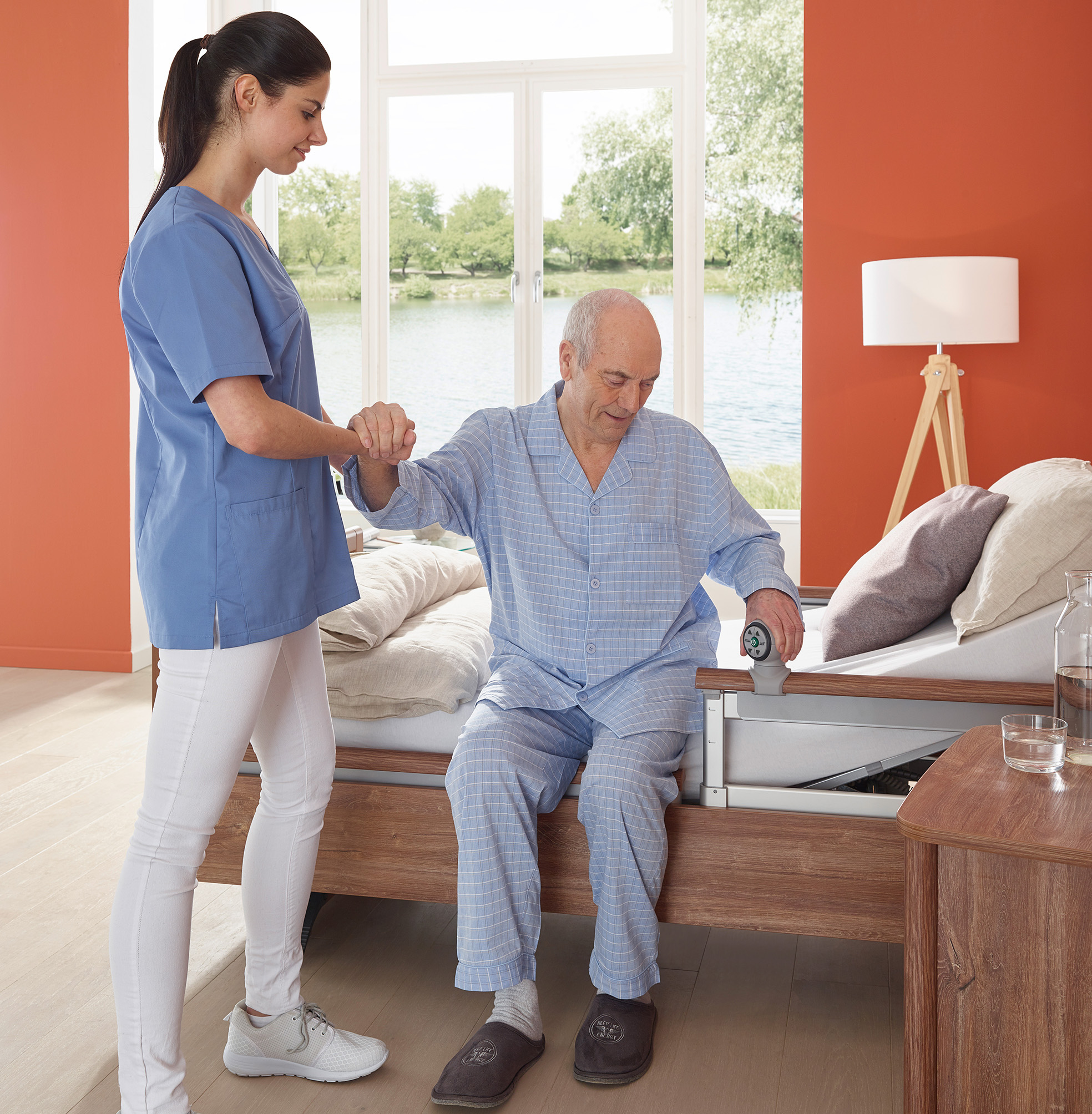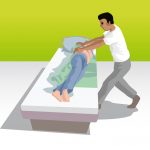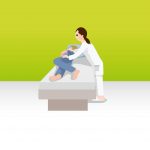How nursing measures could prevent falls.
According to a WHO study, more than 40 percent of over-80s fall several times a year. More than 50 percent of home residents fall once a year.
The consequences are bruised pelvis, cuts and sprained arms – in the harmless case. If it runs less smoothly, seniors can break bones or a fall ends fatally. In addition, those affected can be physically impaired: they lose their confidence in their own mobility and avoid fear of falling to move. This worsens the state of health. People withdraw and become lonely. 60 to 70 percent of those who have fallen once again fall again in the next twelve months.
Treatments of falls are expensive. Thus, the costs in Germany amount to about 500 million euros annually. In addition, there is an additional care and post-treatment needs for those affected and families. Fall prevention can therefore not only prevent injuries, but also save costs. First and foremost, every fall avoided increases the quality of life of older and ill people and strengthens their confidence in their own mobility. Who heeds these ten tips, practices active fall prevention.
-
Assessment of the risk
Learn to correctly assess the risk of falling: Does the person have problems with balance, impaired vision or is impaired by paralysis or insensitivity? If the person often stops walking for talking, this is a first sign of poor concentration and balance disorder. Is he or she suffering from dizziness, temporary loss of consciousness or weakness? Incontinence can also be a risk of falling when rushed to urinate the toilet must be visited. Furthermore, the fall story of those affected plays a role.
-
Balance training
Balance and freedom of movement are limited in old age. A common cause is too little exercise. This can be counteracted by physiotherapy, Thai Chi, Pilates or a dance class. Also concentration training is important. With the help of a back-check device, the strength level of the abdominal and back muscles can be measured. In this way targeted deficits can be counteracted. The range of courses for targeted prophylaxis is growing steadily. General practitioners and physiotherapists advise.
-
Eliminate sources of danger
Carpet edges, cables, smooth and wet floors, uneven paths or too high or low toilets are causes of falls. This can be counteracted with anti-slip mats and glued-on carpet edges, sturdy shoes or anti-slip socks. At night, the paths should be well lit. In addition, light switches and aids should be near the bed. Modern care beds are equipped with a sensor-controlled night light. It automatically activates when leaving the sleeping area and deactivates when re-entering.
-
Correct dosage
Medications can greatly affect cognitive abilities. Therefore, caregivers should examine and adapt to the need, dosage, side effects and interactions.
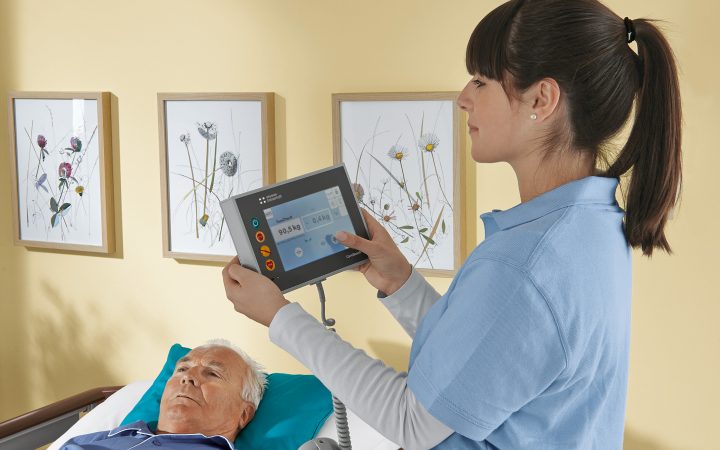
Modern technology, such as the fully automatic weighing system integrated in the sentida 7-i nursing bed from Wissner-Bosserhof, helps to adjust the dosage to the body weight. It saves laborious relocation of the patient, offers a weekly and monthly overview for medical purposes and a BMI calculation.
-
Pay attention to blood pressure
Postural hypotension, or a sudden drop in blood pressure when changing the head height, is widespread among the 65-year-olds and the elderly. A good tip is to get used to sitting on the edge of the bed for a few seconds after waking up before getting up. So the blood pressure is automatically adjusted. The risk of dizziness decreases.
-
Ensure a good standing position
So that affected persons can get out of bed, the bed edge should be at chair height. For fall prevention at night, a flat bed position is recommended, and for the pleasant work on the bed again a high. Modern care beds offer good ideas for this.

With the 3-stop strategy from Wissner-Bosserhoff, for example, the height of the lying surface can be adjusted individually: comfortably via hand switch to sleep in the lowest position (28 cm), to get up in the mobilization position (41 cm) and to facilitate care in the care position (80cm). A built-in Bed Height Assistant, in turn, alerts professionals or relatives when the low position is changed at night.
-
Safe stop and stand
Handholds indoors and outdoors, handrails on stairs or walking aids such as walkings sticks or rollators, are helpful for fall prevention. Especially when getting up from bed or chair holding options are important. Modern care beds make it easier to get up independently by being able to get into the perfect stand-up height at the push of a button.
-
Good sight, safe walking
At regular intervals (at least every two years), check the affected person’s eyesight and, if necessary, have glasses made or adjusted. As you age, the lens of the eye loses flexibility and the vision becomes dimmer. Therefore, make sure you have clear marks of important objects and obstacles. Ask the older person what colors he or she sees well.
-
Mental support
Take a walk or dance slow waltz. Often there are old passions or sports that can be picked up again with your support. Personal interest and fun in the activity are important prerequisites to motivate older people to physical activity in the long term. Use hip protectors and hard hats to reduce anxiety in case of increased risk or accident.
-
No deprivation measures
Fixing people in need of care to the bed, keeping them quiet with psychotropic drugs or closing the door at night has long since become obsolete, thanks in part to modern technology. The SafeSense® sensors from Wissner-Bosserhoff signal to the nursing staff when the patient has left the bed or is about to leave it.
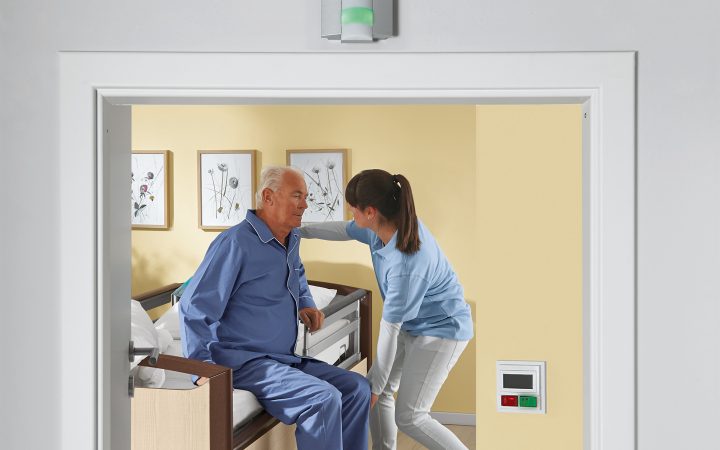
The nurse call is flexibly adaptable to the patient’s mobility state, from zero seconds to 30 minutes. Thus, the needs of the person can be addressed, for example, with a small walk. The human being is not restricted in his freedom of choice and retains the interest in his own mobility.
